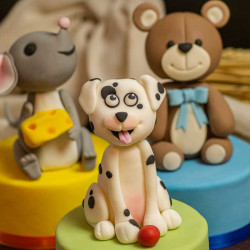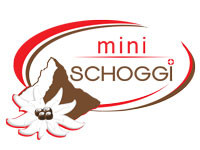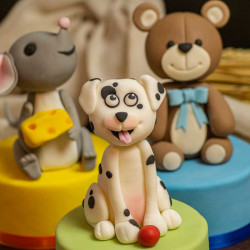-
MenuBack
-
Online Store
-
-
-
-
-
Leer
- Couverture
- Temperature control units
- Aids for chocolate
- Chocolate molds
- Praline fillings
- Chocolate ingredients
- Praline hollow body
- Chocolate colors
- Chocolate tattoos
- Chocolate packaging
- Bean to Bar
- Material for cutting chocolates
- Batons with Kirsch
- Airbrush for chocolate
- High Heels Accessories
- Textured films for chocolate
- Chocolate fountain & fondue
-
-
-
-
-
Kuchen & Torten
- Cakes Fillings & Ingredients
- Fondant & Marzipan
- Cakes tools
- Cake rings
- Silicone molds
- Baking pans for cakes
- Cake stand
- Cakes packaging
- Airbrush for cakes
- Sugar flowers accessories
- Cake Topper & Wedding Figurines
- Cakes dummies
-
-
-
-
-
-
-
-
-
-
-
-
-
-
-
-
-
-
-
-
-
-
-
Füllungen
- Baking chocolate
- Glucose & Sorbitol
- Cocoa beans
- Cocoa nibs
- Monin syrup
- Champagne & Alcohols
- Freeze dried fruits
- Cake & cake glaze
- Flours & baking ingredients
- Chocolate coating & chocolate
- Milk powder
- Granules
- Nuts & Nougat
- Fruit puree
- Creams & Fillings
- Egg yolk & egg white
- Fruit powder
- Special ingredients
- Fondant & Flower Paste
-
-
-
-
-
-
-
- Punching, cutting & embossing
- Mixing bowls & whisks
- Chocolate material
- Thermometer & Burner
- Gloves & Protective Material
- Smoothing & Modeling
- Roll out bar
- Dough scraper & horn
- (Flour) sieves
- Cake turntable
- Spatula & Spatula
- Silicone embossing molds
- Insert strips & cake slices
- Brushes & Tweezers
- Measuring cup
-
-
-
-
-
-
-
-
-
Ausstechformen
-
-
-
-
-
-
-
-
-
Courses
-
-
kurse
- Current courses
- Praline courses
- Chocolate courses
- Chocolate kiss course
- Macaron courses
- Cake courses
- Baking courses
- Patisserie courses
- Ice cream course
- Guetzli, Cookie & Confectionery Courses
- Bread courses
- Pasta courses
- Apéro course
- Cupcakes courses
- Éclair course
- Courses in Zurich - Adliswil
- Children's courses
-
-
- Team Events
- Hen Night
- Retail Store
-
About Us
-
-
-
DirectionsDownload relevant PDF now.
-
-
-
Recipes blog
-
-
Recipes Blog
-
-
-
Shipping and Payment
-
-
Versand/Zahlung/Impressum
-
-
- Courses
-
- Current courses
- Praline courses
- Chocolate courses
- Chocolate kiss course
- Macaron courses
- Cake courses
- Baking courses
- Patisserie courses
- Ice cream course
- Guetzli, Cookie & Confectionery Courses
- Bread courses
- Pasta courses
- Apéro course
- Cupcakes courses
- Éclair course
- Courses in Zurich - Adliswil
- Children's courses
Modeling courses
There are 2 products.
Active filters

Animals modeling course dog and teddy
On 2024-10-09 13:30:00 - 17:30:00
- -10%
- Course language: German
Modeling courses
Ever since cakes have existed, they have been decorated and adorned. Today, it has become a real art, and especially in America and England, cake design has become not only a popular hobby but also a popular profession. At competitions all over the world, creative cake designers can compete to see who can create the most exquisite wedding cake, the most impressive 3D cake or the most beautiful edible cake. But the best thing about cake decorating is that anyone can start and it's incredibly fun for professionals and beginners alike.
Welcome to miniSchoggi
If you want to learn how to make beautiful sugar flowers and matching leaves, paint them and tie them perfectly, you have come to the right place. Also smaller flowers, animals, figures and various objects are modeled at our courses. All courses are always conducted by trained professionals. The sugar flower courses, where, depending on the course description, precious roses or peonies are made, are led by our head confectioner. For the figure and animal modeling courses, we are always visited by a guest cake designer. These are also professionals who have specialized in the production of motif cakes or modeling figures. In this way, we guarantee you the best possible support and make it possible for us to answer many questions. Through years of experience with various processing techniques and all kinds of modeling masses and tools, the course leader can pass on many tips and tricks that will also help you with future modeling projects.
Human & Animal Modeling Courses
According to the course, you will learn how to create one or more specific figures from modeling clay, fondant and flower paste. Our modeling courses are each conducted by guest pastry chefs who bring their very own program. In this way, you will benefit from the expertise of someone who spends every day creating and decorating sweet and realistic-looking figures. The courses have very different contents and themes. So, one time many different safari animals are made, another time an elegant fairy and yet another time a cute baby themed cake. In addition to modeling one figure or one theme, you will also learn the general handling of different modeling masses and tools at the course. By working independently with the masses, you will learn a lot about their different textures and possible uses. In this way, you will also be able to model your own creations in the future and incorporate what you have learned into this artistic work.
Modeling clay
These courses are all about working with modeling pastes. But there are many different types: in addition to modeling paste and modeling chocolate, rolling fondant, flower paste and marzipan can also be shaped. But what are the differences? Some of these masses are very similar, flower paste, for example, is a further development of roll fondant as well as flower paste. But let's start at the beginning.
History of cake decoration
With the transition from the salty pie to the cake of almond paste, the decorations also came into play. The first decorations were, of course, still quite simple and consisted of the dough itself. An example of this is the Linzertorte, one of the oldest cakes in the world. On a dough with almonds lies a layer of red jam, covered by a pretty lattice of dough. At that time, this was already the whole refinement.
As already mentioned, almonds were a popular ingredient for pastries and desserts. This was due to the slight sweetness that the almonds bring. This meant that less of the expensive sugar had to be used and the pastries produced still tasted pleasantly sweet. Thus, the invention of marzipan also dates back a long time. The almonds were finely ground and then rolled until a nice tender mass was formed. Marzipan already existed in the Middle Ages, so it stands to reason that it was also used early on as a decorative element. When exactly this was the case, however, is unknown.
A relatively similar mass to marzipan is rolled fondant. However, this does not contain almonds but mainly sugar. Despite the laborious import and the high prices, sugar was processed into fondant as early as 1555. For a long time, the sugar mass was considered a luxury good, which favored the development of various decorations.
Rich aristocrats and high-ranking politicians wanted to show off their wealth, especially at receptions and banquets. What would be more appropriate than a huge, richly decorated cake? The cakes were often huge, and it was not uncommon for the door wings to have to be unhinged in order to bring the cake into the hall. A collapse of the cake could also be observed from time to time.
The decorations of the cakes consisted of all kinds of expensive sugar masses. Small figurines or animals were modeled with fondant, and icing was applied by hand as a filigree pattern. A particularly famous cake with a finish made of these masses was Queen Victoria's wedding cake. She got married in 1840, and a four-tier cake was served for dessert. On the one hand, this started the trend of extravagant wedding cakes, and on the other hand, it gave the icing the name royal icing, which has been in use ever since.
Nowadays, this royal icing is applied with a piping bag and a matching nozzle, but this technique was invented in the 19th century. At that time, a pastry chef accidentally cut off a corner of his bag of meringue and used it to write his name on the work surface. Before that, all fine icing decorations were applied by hand.
The roll fondant was also further developed. With tragacanth, Tyclose or CMC powder, the fondant was made even more elastic. In addition, it dries out so also faster, which is particularly convenient for small figures that should retain their shape. However, the modeling fondant is not particularly suitable for especially thin creations. With another sugar paste, which also contains egg white, had more success. The flower paste can be processed very finely and hardens quickly, an important property for making filigree petals that should keep their shape.
Modeling chocolate is an alternative to sugar masses. It consists mainly of couverture and glucose and is as malleable as fondant. Because it tastes of chocolate, it is more popular than the pure sugar masses, which are more elastic and less brittle. The masses can also be mixed to combine a suitable consistency and a pleasant taste.
All compounds can be dyed without any problems. It is only important to consider the type of color. While powder colors would dry out and are basically only suitable for painting finished flowers and figures afterwards, liquid colors could dissolve part of the sugar in the mass and thus cause the mass to become soft and melt. Liquid colors, however, can be sprayed very thinly onto modeling clay or fondant tops. To do this, use an airbrush that distributes the liquid in a fine spray mist on the mass.
Only gel and paste colors are suitable for coloring the sugar masses. These do not change the consistency of the mass and color intensively. It is best to put on gloves to knead under such a color, otherwise your fingers will also take on the color. Fondant has a small advantage over modeling chocolate here. Modeling chocolate, like marzipan, never turns completely white. The white chocolate can be colored very brightly, but a yellow tint will always remain. Other colors, however, are absorbed just as well as from other masses. For this purpose, you should always use the light modeling chocolate, the other masses are often too dark for this.
If you would like to learn more about the individual masses and about other aids, such as baker's starch or CMC powder, we would be happy to welcome you to our cake decorating course. There you will also learn how to correctly cover and decorate cakes with fondant. This will give you the perfect base to set the scene for your modeled figures and flowers.

